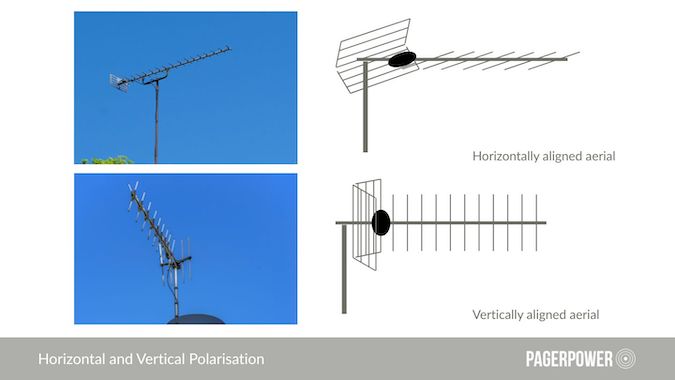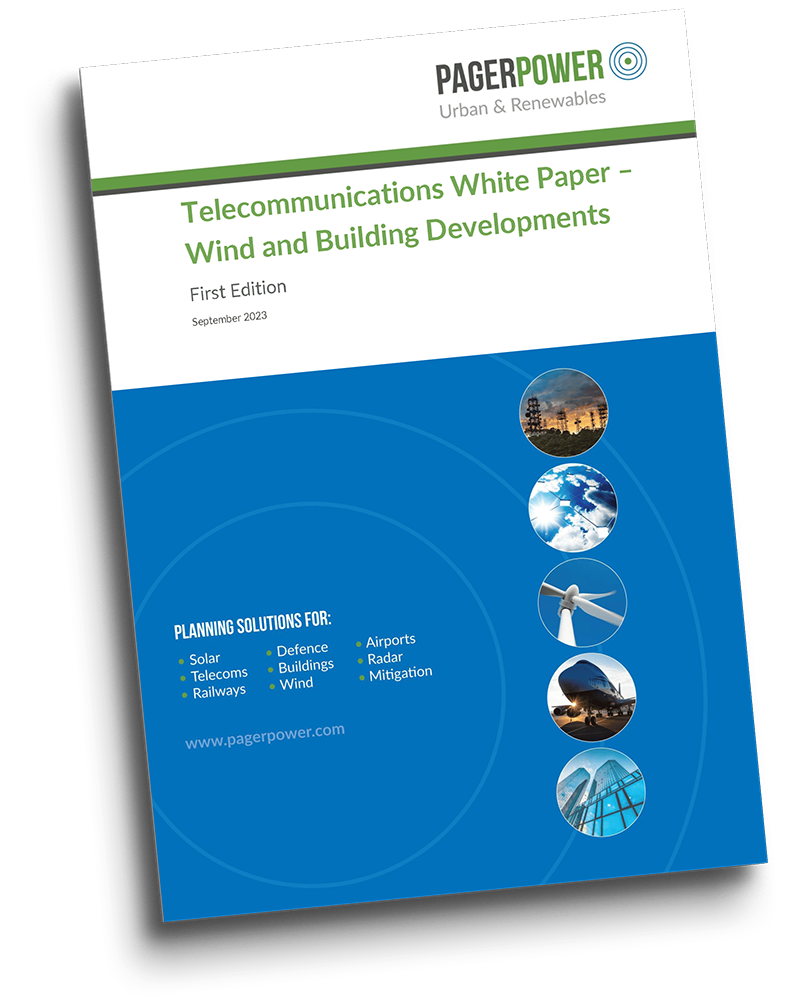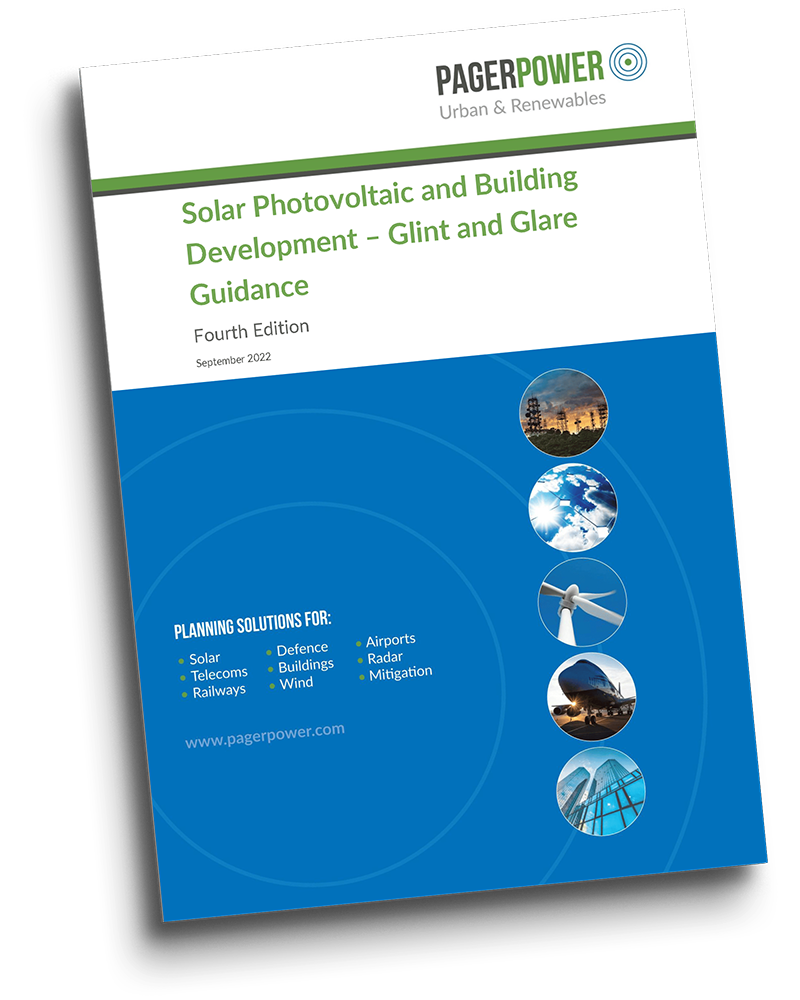Television and Radio Reception Series – Why Polarisation Matters

The planning application for your development is in progress until the council raises a concern – Could your building or wind development interfere with television reception?
Television reception concerns can arise unexpectedly, especially when objections come from a local planning authority, residents, or other stakeholders late in the planning process or post-construction. These issues can delay progress, result in poor public relations, and affect the perception of future projects.
Baseline and post-construction digital terrestrial television reception surveys are key assessments for developers and planners looking to reduce planning risk and improve public relations. Baseline surveys record the signal quality before any work begins, acting a bit like an insurance policy, while post-construction surveys provide an investigation method for reports of interference to determine whether any interference is attributable to the development itself.
One of the most important technical factors to consider when assessing the impact upon terrestrial television reception is aerial polarisation. In this edition of our Television and Radio Reception Series, we explain what aerial polarisation is and why it matters.
What Is Aerial Polarisation?
Digitial terrestrial television signals are transmitted with a specific polarisation, either horizontal or vertical, and this refers to the orientation of the signal’s electromagnetic field. For the best possible reception, a household aerial polarisation must match that of the polarisation of the broadast signal from the associated transmitter. If not, the signal quality can be poorer, which can result in a less than optimal picture and audio quality. Changing the polarisation of a Television aerial is a relatively simple process of loosening one or two nuts with a spanner and rotating the antenna by 90 degrees.
‘Your aerial needs to be mounted flat (horizontal), or on its side (vertical), depending on the transmitter it is pointing towards and the polarity of the services broadcast.’ [1] – BBC Help Guide on Television Reception.
Why Polarisation Matters in Reception Surveys?
When undertaking a baseline or post-construction reception survey, it is important that the polarisation of the aerial’s polarisation matches the polarisation of the appropriate transmitter being surveyed for signal strength and quality.
‘Generally speaking, main transmitters radiate horizontally polarised signals, and relay transmitters radiate vertically polarised signals, although there are some exceptions to this, such as Rowridge, which radiates both horizontal and vertical components. In principle, a receiving aerial with its elements horizontal will only respond to horizontally polarised transmissions, and will completely ignore vertically polarised signals. In practice this isolation is not perfect, but there will be a large loss of signal if the aerial’s polarisation is not matched to the transmission’s polarisation.’ – R-Book, Edition 8 – Digital TV Group. [2]
When trying to understand which transmitters are most likely serving an area, it is worth checking resources such as the detailed transmitter information for industry professionals [3] and UK Free TV and bespoke desk based internal modelling [4]. This is finally confirmed by observation of transmitters on properties and buildings whilst out on survey to determine the aerial type and direction they are facing, supplemented by measurements of which signals are the highest quality as measured.
If for example, there are many transmitters of a single polarisation and pointing in the same direction it is indicative of which transmitter is providing services in practice. If the signal strength is strong for the channels that are expected for that transmitter, then this confirms that which is anticipated. This allows us to deliver assessments that consider each location in context and determine the best possible signal strength during the baseline scenario.
How Does Location Determine Polarisation?
Building Developments in Urban Areas – Mostly Horizontal
For building developments, which are typically located in urban or city centre locations, nearby residents are usually served by a single main high-power transmitter. These transmitters typically broadcast horizontally polarised signals and therefore most aerials are horizontally aligned and facing towards the main transmitter. Examples of this include the Crystal Palace transmitter [5] serving London, the Winter Hill transmitter [6] serving Manchester, or the Sutton Coldfield transmitter [7] serving Birmingham.
Main transmitters tend to serve large areas, especially cities that are located on relatively flat geography where the receiving aerial line of sight to the transmitter is not blocked. Reception tends to be consistent and strong, but new buildings (especially tall buildings) can cause significant obstruction to the signal, by causing diffraction effects [8].
Wind Development in Rural Areas – Both Horizontal and Vertical
In contrast, wind farm developments are generally located in rural or semi-rural areas, where surrounding properties may not have a clear line of sight to a main transmitter due to the undulating nature of the terrain. In such cases, properties may often rely on multiple localised relay transmitters, which are at a lower power, making them more susceptible to interference.
Relay transmitters tend to serve small areas, such as villages located within valleys. The local relay transmitter is typically located on higher terrain and obtains its signal from a main transmitter. Reception quality may be moderate and the selection of channels available are sometimes more limited. However, the likelihood of a wind farm being located between the local transmitter and serving areas tends to be small due to the limited area in which they provide coverage.
Conclusions
Aerial polarisation may seem like a small technical detail, but it is an important consideration in understanding and mitigating the risk of digital terrestrial television interference. Whether you’re developing a tall building in a city centre or a wind farm more remotely, understanding the type of television signal local residents rely on is essential.
At Pager Power, we support developers with terrestrial television and radio assessments for both wind and building projects and have done so on over 500 projects to date.
Need support on your next project?
If you require assistance for one of your projects, please get in touch on our website, email us at info@pagerpower.com or call us on +44 (0)1787 319001.
References
[1] https://www.bbc.co.uk/reception/help-guides/freeview/what-type-of-aerial-do-i-need[2] https://dtg.org.uk/wp-content/uploads/2022/07/DTG-R-Book-8.pdf[3] https://www.freeview.co.uk/corporate/detailed-transmitter-information[4] https://ukfree.tv/maps/freeview[5] https://ukfree.tv/transmitters/tv/Crystal_Palace[6] https://ukfree.tv/transmitters/tv/Winter_Hill[7] https://ukfree.tv/transmitters/tv/Sutton_Coldfield[8] Ofcom (2009): Tall Structures and their impact on broadcast and other wireless servicesThumbnail image accreditation: Ellie Burgin from Pexels.com. Last accessed on 19th May 2025. Available at: https://www.pexels.com/photo/birds-perching-on-bar-17429856/https://www.pagerpower.com/wp-content/uploads/2025/05/20250519_-AW-news-article-terrestrial-tv-1280-x-720-px.jpg







